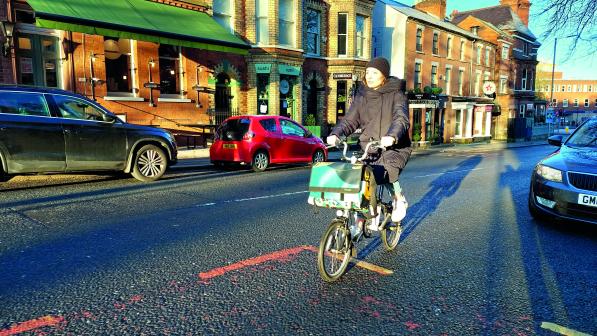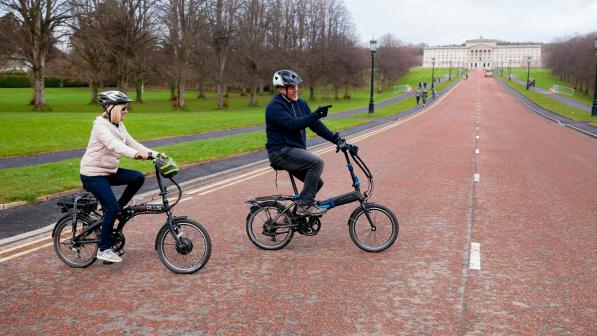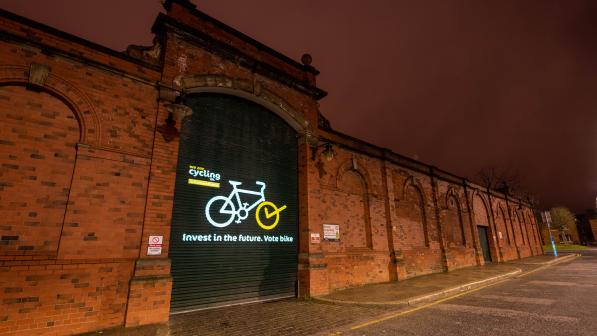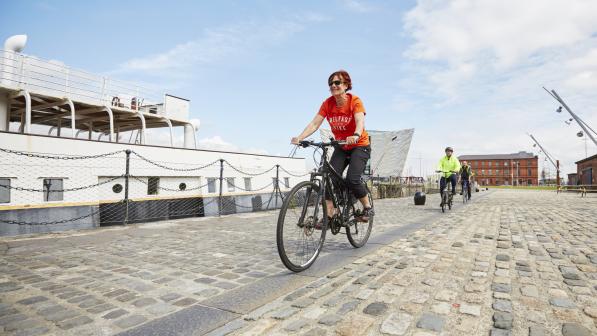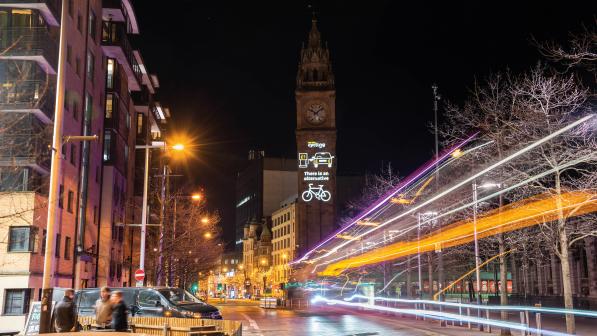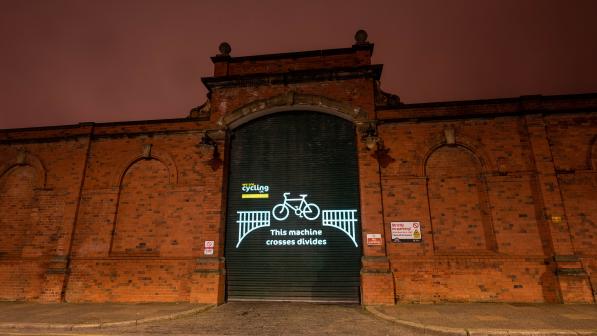Satisfaction in cycling facilities in Northern Ireland drops again

It’s hardly surprising that the recent Walking, Cycling and Public Transport in Northern Ireland report, an annual survey conducted by the Department for Infrastructure (DfI), showed that less than half of respondents are satisfied with cycling facilities in their area. There are only a few spaces in Northern Ireland where basic cycling facilities even exist.
What is even more concerning, however, is the fact that satisfaction levels have dropped and have been dropping since the reports began in 2017.
This isn’t the case for England, Scotland, Wales or Ireland, all of which have seen record amounts of investment in cycling infrastructure and ground-breaking changes made to legislation and the Highway Code.
These countries started to invest money and resources in cycling before the cost-of-living crisis, which meant they were better placed to capture the increased number of people considering cycling as a cheaper alternative to driving.
Satisfaction levels are dropping because our cycling infrastructure remains the same while we watch our neighbours invest and build more every year
Andrew McClean, Cycling UK engagement officer in Northern Ireland
When people in Northern Ireland considered this change, as the fuel pumps tipped over the £2p/l mark, they were faced with:
- Residential and urban streets with little to no traffic-calming measures
- Completely inappropriate 30mph speed limits
- Faded white lines on roads to ‘protect’ them when they share the space
- Cars parked on nearly every street and across every type of bike lane
- Little to no segregated cycling network
- Unlit greenways and the early closure of public parks
- A police force seemingly uninterested in enforcement of the Highway Code and protection of vulnerable road users
They responded accordingly and put their bikes back in the shed.
This was the second major opportunity in the space of two years to make our cities and towns more liveable and prosperous, and to make our people healthier and happier. It was completely missed, yet again, by our Department for Infrastructure.
People in Northern Ireland are aware of the changes overseas and over the border. They know we are far further behind, and yet are investing a fraction per head in comparison. Satisfaction levels are dropping because our cycling infrastructure remains the same while we watch our neighbours invest and build more every year to support active travel and reduce car dependency.
What would you consider to be active travel?
There is also the case of the baffling first question in the survey carried out for the report:
“Could you tell me what modes of transport you would consider to be active travel?”
In which both ‘car or van’ and ‘taxi’ were options.
Quite why the department in charge of transport across Northern Ireland felt the need for clarification on the definition of active travel is beyond us. But more worrying is that it is giving legitimacy to the idea of considering driving a car as part of it.
We are demanding an answer from DfI on what its plans are to increase spending year on year, and what additional funds have been spent on active travel since the Act became law in June
Andrew McLean
For the avoidance of doubt, the very broadest definition of active travel refers to ‘walking, wheeling and cycling’ as the main forms, but can include others such as ‘skateboarding, skiing and running’. It does not, and never has, included public transport, taxis, driving cars, vans, mopeds or scooters.
This is for obvious reasons: in these modes the person is not generating the power required to transport themselves, it is coming from a fuel source and a motor.
This may be the beginning of the DfI trying to water down the legal requirement for active travel spend from the Climate Change Act, which gained Royal Assent on 6 June 2022, approaching six months ago. We have pressed DfI on this several times and received no satisfactory answer that there has been any progress made on meeting this statutory requirement.
The Act states that: “The Department for Infrastructure must develop sectoral plans for transport which set a minimum spend on active travel from the overall transport budgets of 10%.”
We are demanding an answer from DfI on what its plans are to increase spending year on year, and what additional funds have been spent on active travel since the Act became law in June.
The reason active travel is part of the Climate Change Act is because transport is Northern Ireland’s second-largest CO2 emitter, and because there is strong political will from MLAs across all major parties to invest in and increase the number of people walking, wheeling and cycling.
In the absence of an Assembly and ministers, it is up to organisations like ours, and individuals like you, to uphold not only the political will, but the rule of law that DfI should have been following for six months already, and clearly don’t have plans to do so anytime soon.
